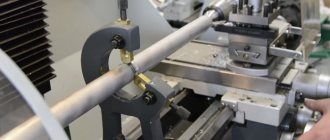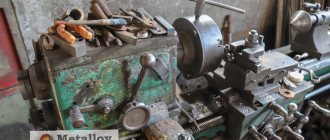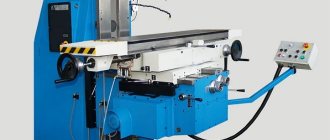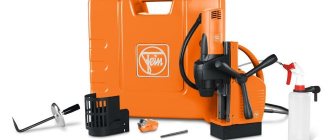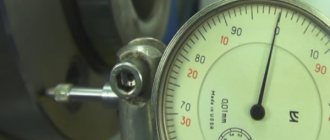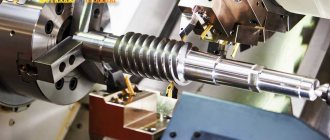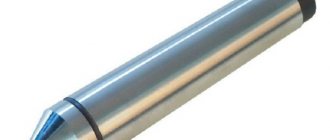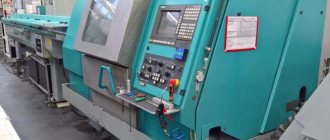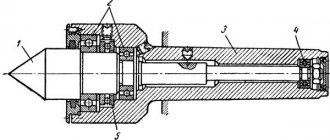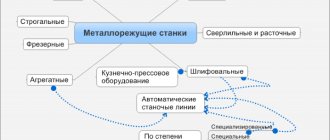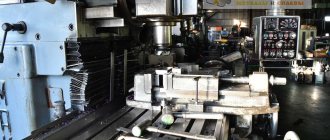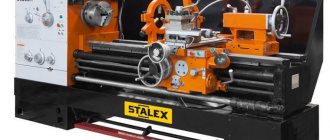Today, not a single manufacturing enterprise can operate without machines. Whether it is a small private company or a large factory, processing equipment is used in one form or another in all industries. Another thing is that there are many classifications of machine units, functional features, as well as individual optional content. These and other factors make it possible to determine different types of machines based on specific features and characteristics.
What are machines called?
The main distinguishing feature of this equipment in the general category of industrial units and construction tools is the presence of a frame on the basis of which the working body or system of bodies is arranged. The processing element can be a small abrasive wheel, a drill, or a diamond bit - it depends on the operation being performed. Most often, the overall appearance of the machine is presented as a massive structure with working equipment, a feed platform, clamps, a motor, etc. But in household and small-scale workshops, installations of modest sizes are also quite suitable. Moreover, if previously only stationary units were necessarily classified as machine tools, today there are many mobile devices among them. Moreover, the line between a hand-held power tool and a small-sized machine is not always clearly defined even by manufacturers. And yet, the presence of a bed, power plant and processing elements allows the equipment to be classified as full-fledged machine tools. Which ones exactly is another question.
Voting for the best machine with Aliexpress
Which machine would you choose or recommend on Aliexpress?
MOSKI-MSQ
0.00% ( 0 )
CNC 3018 Pro
0.00% ( 0 )
MOSKI-MSQ CNC 1610
0.00% ( 0 )
Rabotec RT-1325BR-T1
0.00% ( 0 )
HL 1060
0.00% ( 0 )
Livter
0.00% ( 0 )
YunlinLi MJ10
0.00% ( 0 )
Rabotec TJ-1390Itvs
0.00% ( 0 )
GUYX G2-265
0.00% ( 0 )
ZONESUN
0.00% ( 0 )
GUYX WH-T03
0.00% ( 0 )
Longxuanyin
0.00% ( 0 )
TwoWin 3000mw laser engraver
0.00% ( 0 )
CNC 3040
100.00% ( 1 )
NEJE Master 25 Max
0.00% ( 0 )
Lathes
One of the most popular categories of production machines, which cover all operations related to turning parts. A turning machine allows you to adjust the shapes of workpieces that initially have bodies of revolution, to carry out cutting, turning grooves and, in some cases, drilling. It can be said that the target direction of operation of such equipment is the maintenance of workpieces in the form of bodies of revolution, which during the turning process receive a conical or cylindrical shape. There are different types of lathes that are used in different industries. For example, wood mills may use large machines to create rounded lumber. In the furniture industry, turning units are used to form legs, stair balusters, handles, etc. Such machines are also divided by type of placement - floor or tabletop.
What types of machines are there?
Machine tools are complex units used to shape a device and drill the necessary holes. Mechanical engineering, industry, and small manufacturing enterprises cannot do without them. Devices can be stationary and mobile. Non-mobile frames with a power unit are more reliable in operation compared to small-sized machines.
| Number | Machine group | Classification by type | |||||||||
| 1 | 2 | 3 | 4 | 5 | 6 | 7 | 8 | 9 | |||
| 1 | Turning | Automatic and semi-automatic | Revolver | Drilling and cutting | Carousel | Screw-cutting | Multi-incisor | For model blanks | Other lathe | ||
| Single spindle | Multi-spindle | ||||||||||
| 2 | Drilling, boring | With vertical drill position | Single-spindle semi-automatic | Multi-spindle semi-automatic | Jig boring machine with one stand | Radial drilling | With horizontal boring | Diamond boring | With horizontal drill position | Other drilling | |
| 3 | Grinding and polishing | Cylindrical grinding | Internal grinding | Roughing and grinding | Specialized | — | Sharpening | Polisher with square or round bed | Polishing, lapping | Another with an abrasive tool | |
| 4 | Combined | Universal | Semi-automatic | Machine | Electrochemical | Electrospark | — | Electroerosive, ultrasonic | Anode-mechanical | — | |
| 5 | For processing threads and teeth | Gear cutter for cylindrical wheels | For threading bevel gear teeth | Gear hobbing machines for spitz rollers and cylindrical wheels | Gear hobbing machines for worm wheels | For machining tooth ends | Thread milling | Dental finishing | For grinding teeth and threads | Other threading and gear finishing | |
| 6 | Milling | With vertical cutter | Continuous action | — | Copying and engraving | Vertical non-console | Longitudinal | Universal wide spectrum | Horizontal cantilever | Other milling | |
| 7 | Planing, slotting, broaching | Longitudinal with one post | Longitudinal with two posts | Cross-planing | Slotting | Horizontal broach | — | Vertical broach | — | Another planer | |
| 8 | Split | Cutting machine with working body: | Correct-cutting | Saw | |||||||
| turning cutter | cutting wheel | friction block | tape | disk | hacksaw | — | — | ||||
| 9 | Another | For processing pipes and couplings | Saw-cutting | Straight- and centerless-grinding | — | For testing tools | Dividing unit | Balancing | — | — | |
Table 1. Machine types
Lathes
Units of the first group make up 30% of the machine park of industrial enterprises. They are used in almost all operations for turning metal and other products that have the shape of rotating bodies:
- adjustment of workpieces;
- thread cutting;
- grooving;
- metal cutting;
- processing of the ends of parts.
Lathes are indispensable in the manufacture of bolts, bushings, washers, axles and other conical or cylindrical parts. The raw workpiece is secured with a spindle locking chuck:
- with through hole;
- self-centering;
- with independent movement of cams;
- with rod.
The more powerful the design of the spindle and machine drive, the higher the productivity of turning equipment when carving parts and the larger the workpiece it processes.
Diagram of a conventional lathe with main components: 1 – spindle head; 2 – support for securing the cutting element; 3 – tailstock; 4 – bed; 5, 9 – stands; 6 – apron; 7 – lead screw; 8 – running roller; 10 – feed box for rotational movements from the spindle to the support; 11 – guitar of replaceable gears; 12 – starting device and engine; 13 – gearbox; 14 – spindle.
Manufacturers offer different types of large-sized lathes for enterprises, as well as mini-machines for metal, convenient for private use.
Drilling machines
These machines are no less popular among craftsmen and in production than turning machines. They are used to create through and blind holes in workpieces and for drilling work on sheet metal.
Note: the advantages of units over a drill are high accuracy and the ability to drill large-diameter holes.
Vertical drilling machines are common and often used when working with relatively small parts. The principle of operation of the device is the mobility of the workpiece relative to the working body.
The main components of a vertical drilling machine: 1 - column-shaped frame; 2 - engine; 3 - drilling head; 4 — shift levers for gearboxes and feeds; 5 - manual feed; 6 — dial for controlling the depth of processing; 7 - spindle; 8 — hose for coolant supply; 9 - table top; 10 — handle for lifting the tabletop; 11 - base; 12 — electrical installation box.
Tabletop single-spindle machines are used in instrument making to make small holes. Similar multi-spindle machines significantly increase productivity.
Drilling and slotting machines are capable of performing several operations and working with a milling cutter, but these options have limited capabilities.
To drill large holes, radial drilling units are used, during processing of which the workpiece remains stationary and the spindle moves.
Note: Large radial drilling machines are carried directly to the workpiece by a crane. Other modifications are equipped with trolleys and are fixed with shoes during operation.
Boring units
The machines are designed for working on metal; serial and individual production cannot be done without them. On these machines you can:
- drill;
- bore;
- countersink;
- cut threads;
- grind and mill cylindrical surfaces;
- trim the ends.
The tool required for the operation is mounted on a boring bar in the spindle hole, the location of which can be horizontal or vertical.
Horizontal boring machine.
Vertical boring machine.
Jig boring machines perform similar actions, the difference is the ability to make preliminary markings.
Diamond boring units are highly accurate, and during boring the error does not exceed 3–5 microns.
Grinding and sharpening
This group of machines carries out external and internal processing of workpieces in the form of bodies of revolution, grinding of threads, wheel teeth, cutting parts, sharpening tools. Based on the type of grinding and the surface being processed, machines are:
- cylindrical grinding;
- internal grinding;
- centerless grinding;
- surface grinding;
- special.
Note: the main working tool in grinding machines is an abrasive wheel or bar, which removes a thin layer of metal from the surface.
Grinding machines are distinguished by types of feed:
- movement of the part together with the table and movement of the grinding wheel - cylindrical grinding machine;
- rotation of the workpiece or grinding wheel and movement of the grinding wheel headstock - internal grinding machine;
- movement of the table and periodic transverse movement of the headstock with vertical shift of the abrasive wheel - surface grinding machine.
Lapping units
Metal-cutting lapping machines are used for fine finishing and lapping - the surface of the part is processed to an ideal state using a fine-grained abrasive mixture, which removes a thin layer of metal or other material. Are used:
- diamond dust;
- emery;
- electrocorundum
The powder is applied to flat or round laps made of cast iron, low-grade steel, lead, copper, wood and is held in place with kerosene or turpentine mixed with a special lubricant or paste (aluminum oxide, chromium, Vienna lime).
Important : finishing of the part occurs at a slow speed with a constant change in direction.
The machines are equipped with adjustable and non-adjustable laps. The former are characterized by a split shirt, an internal cone and a device for changing the diameter of the finishing element.
Honing units
A group of grinding and lapping units for processing the outer surfaces of cylindrical parts. These are bushings, rollers, pins, etc. For cutting, a honing head with abrasive stones is fixed in the spindle.
Machines with horizontal, vertical and inclined arrangement of one or more spindles are produced as standard.
Gear processing machines
Depending on the type of working tool, machines for cutting and finishing cylindrical wheel teeth are:
- gear hobbing;
- gear grinding;
- dental;
- dental planers, etc.
The units cope with the functions of cutting teeth, finishing and finishing processing of cylindrical and bevel wheels with straight, oblique and curved teeth, chevron, worm wheels, gear racks.
Cutting methods:
Copying - the cutter has cavities identical to the teeth and moves along the cavities of the wheel, leaving an imprint. After working on a separate depression, the part is turned around in a circular step and proceed to the next one. The inconvenience of this processing method is that each wheel requires a separate cutter, and replacement takes time. However, working with such a unit is simple.
Information: the copying method is beneficial for single production or repair. For serial production, gear shaping units are used.
Running in is a common method with high productivity and precision of cut wheels. One tool processes workpieces with different numbers of teeth. The cutting edges of the tool are sequentially located in the teeth of the wheels and rolled, interlocked with each other. In the rolling method, hobs are most often used.
In addition to the main methods of processing gears, there are other methods with high productivity:
- chiselling all the cavities of the part at once with a milling cutter with similar cavities on the cutting edge;
- broaching all teeth;
- rolling by cold or hot working;
- drawing or knurling without removing the top layer of material;
- pressing of teeth (suitable for synthetic products).
Thread processing and thread rolling
This is the fifth group of industrial machines that are used in mechanical engineering for thread cutting. These include thread milling, nut-cutting, thread and worm grinding machines.
Cutting methods depending on the working tool:
- internal thread - cutters, comb cutters, taps are used;
- external thread - comb and disk cutters, cutters, screw-cutting and round dies;
- multi-start screws and worms - vortex heads in mass production.
Information: thread rolling units use a method of cutting threads without removing chips from the workpiece. The part is pressed between flat or round working elements and the desired shape is imprinted on it.
In machines with round dies, the product is placed between movable and stationary dies. Then the moving element is brought to the workpiece, presses it and rolls the thread with several revolutions of the part.
Nut tapping machines
To produce products with precise threads on mass production lines, automatic and semi-automatic nut-tapping machines with straight or curved shanks are used. Units can be single- or multi-spindle.
Milling machines
The group consists of machines with a multi-blade cutting tool - a milling cutter, which processes a progressively moving flat or shaped workpiece with rotational movements.
A wide range of work performed is provided by a variety of cutters:
- cylindrical (a) – for surface treatment;
- disk (b) – for making grooves;
- end (c) – for processing ledges, grooves, shaped parts;
- end (d) – for trimming ledges, grooves, surfaces;
- shaped (d) – for the manufacture of shaped surfaces.
The arrows in the figure indicate the direction of movement of cutters and workpieces during cutting.
Types of milling machines
Console units are equipped with a work table in the form of a console and a horizontal or vertical spindle. The table moves in the longitudinal, transverse and vertical directions relative to the spindle shaft. The capabilities of such machines are limited: they can produce parts of relatively small weight and size.
Universal machines are equipped with a rotary table, and wide-universal machines are equipped with a rotating spindle head. The functionality of such machines is expanded.
Consoleless machines have a rigid base for installing the workpiece, the table moves in the transverse-longitudinal direction, and the spindle makes vertical movements. Designed for processing large-sized parts with significant weight.
Longitudinal milling machines are equipped with a table that makes longitudinal movements. The spindle moves transversely and vertically, and rotates at a given angle.
Continuous rotary and drum type installations have one or more vertical spindles that alternately process incoming parts.
Copy-milling machines perform contouring and milling processing according to the sample.
Key-milling units are characterized by reciprocating movements of the table and planetary movements of the spindle.
Sawing machines
This category presents units that cut workpieces into two or more parts. There are circular machines, that is, disk machines, and belt machines. The first ones carry out cross-cutting of products, usually in an in-line mode. Circular models are also widely used in households, since such operations are quite in demand. Band types of machines allow you to perform longitudinal cuts. For example, a single saw unit can split a long board into two pieces of similar length. Double saws, in turn, simultaneously cut in two levels, allowing you to get three from one board. Special modifications also make it possible to create a curved cut or even a cut at a certain angle. These are units with automatic feed control that perform high-precision processing.
Quality of processing on modern CNC machines
Most of the above-described causes of errors in the processing of products are almost completely eliminated or minimized when using modern CNC milling machines:
- A high degree of accuracy - due to the perfection of the mechanical design and the widespread use of electronic components - reaches values of the order of 0.05-0.01 mm and does not decrease during operation (there is no accumulation of so-called “floating errors”).
- Inaccuracies in the positioning of the workpiece do not have a decisive impact, since most machines have the ability to correct the “zero point” (the initial positioning of the cutting tool), and some models are equipped with special sensors that determine the dimensions of the workpiece and automatically correct their “tool zero”. Auxiliary systems for fastening workpieces on the work table (both standard clamps and complex “vacuum table” type) allow you to place and securely fix workpieces of almost any geometry. And the control program of the machine allows the coordinates of the workpiece to be counted from any convenient point (i.e. the choice of the main design bases is significantly simplified).
- The advent of CNC machines capable of milling at high speeds has intensified the corresponding development of cutting tools. Currently, diamond-coated carbide cutters are becoming increasingly common. Characterized by small dimensional errors and low vibrations, modern milling cutters successfully resist wear and provide high quality surface finishing. Collet chucks that are simple in design and reliable in operation are used to secure cutters in the machine chuck. Thus, the risk of incorrect/unreliable installation and fastening of the tool is also minimized.
- Modern CNC machines, as a rule, are distinguished by increased structural rigidity, which can effectively withstand vibrations (even when processing at high speeds) and minimize deformation of the machine-fixture-workpiece system. This eliminates tool drift during processing and improves the quality of milling. Reliable cooling systems (both for the machine spindle and the cutter itself) help maintain constant thermal conditions and ensure that high accuracy levels are maintained even during long-term intensive machining.
Another important advantage of an automatic CNC machine is the consistency of processing characteristics, which means that there are no significant differences in the accuracy of individual parts within the processed series.
Based on the above, it can be seen that modern CNC equipment allows you to achieve high milling accuracy. However, the reserve for improving quality is far from exhausted and largely lies in the perfection of control programs. That is, it again depends on the “human factor” - the skill and talent of researchers working to identify new technological opportunities
Milling machines
This type of operation is focused on the formation of profiles of a certain type. Most often, flat workpieces are processed by milling by removing the edges to a certain height. Machines of this type are used mainly in furniture production, where they are used to produce shaped elements and accessories that serve primarily a decorative function. Using a milling machine, full-fledged building materials are also produced - lining, plinth, tenons, platbands, etc. More modern types of milling machines support template processing. These are copy-milling units, the cutting parameters of which are selected automatically in accordance with the dimensions of the template part.
Hole machines
Drilling machines are no less in demand both in private workshops and in large industries. They allow you to create blind and through holes, due to which further assembly can be carried out. Unlike electric drills, machines with a drilling function provide higher accuracy and are more powerful. The most popular are vertical types of machines, since they involve an overhead spindle position and give freedom when handling the working platform-table. Some models are capable of performing inclined drilling - this is also implemented thanks to the ability to change the position of the table on which the workpiece is fixed. Drilling and slotting machines represent a separate category. In addition to direct drilling, they are also capable of performing milling operations. Milling is not traditional, but narrowly focused. Such models usually make groove niches, technological sockets and other structural recesses for connection.
Types of metalworking machines
Equipment used in the manufacturing and metalworking industries comes in many varieties. The type of machine depends on its design, control method and equipment. Based on functionality, industrial equipment can be divided into two large groups:
- Specialized - machines that perform only one specific option. Most often, they cannot be reconfigured.
- Multifunctional (universal) - combined machines. Can perform multiple production processes.
Classification of metal processing equipment by type:
- Cutting machines are machines used for cutting metal sheets and cutting workpieces. These include band saws and circular machines.
- Milling - devices with a working surface on which a cutter is fixed. Torque from the spindle is transmitted to it. As the cutter rotates, it removes a layer of metal from the workpiece. Used for machining ends, drilling holes and other operations.
Industrial machines are equipped with a CNC system. With their help, you can set a specific program according to which the key components of the machine will operate without further human intervention. However, only experienced operators can be trusted to configure the program.
A separate group includes equipment for cutting external and internal threads. You can also distinguish between home and industrial devices. The former are intended for small workshops and garages, the latter for mass production of certain parts. The remaining groups of metalworking equipment will be described below.
Surface treatment machines
A wide range of machine tools is presented in the segment of models for surface processing of parts. Such operations are generally positioned as grinding, but this is only the main part of their functions; related tasks are also encountered. What type of processing a particular machine will perform depends on its design. Thus, drum machines are focused on grinding boards, panel and sheet materials on the surface. In essence, shallow cleaning of the material from burrs, protruding irregularities and other defects is carried out. Finer processing is performed by edge grinding models. At first glance, the same function is performed by the main types of lathes, which carefully adjust the surface of the workpiece to the desired shape. However, in this case, edge processing does not only focus on cylindrical parts. This operation is most often used to correct the length of the edge. But there are also machines in this group that are also focused on cylindrical parts. These are oscillating models of grinding machines, but they are used not for decorative improvement, for example, balusters, but for preparing building materials in the form of logs of a certain size.
Disposable razors
Disposable razors are designed by manufacturers for single use. The quality of shaving directly depends on the shape of the blade and the product, so you should pay close attention to these indicators.
BIC flex 3 comfort
Razors that perfectly combine reasonable price and high quality are rightfully considered one of the best. High quality stainless steel is used in the production of blades. In addition, the razor is equipped with a comfortable ribbed handle and moisturizing strips with Aloe Vera, which prevent irritation. Experts recommend this tool even for people with sensitive skin.
Average cost: 80 rubles.
machine BIC flex 3 comfort
Main advantages:
- universal design;
- low cost.
Flaws:
- possible injury to the skin.
Dorco Pace 6
The model is equipped with six blades, which, due to their ultra-thinness and sharpness, guarantee smoothness of the skin for a long time. The body is made of plastic and equipped with anti-slip elements. Comfortable shaving is also achieved thanks to the conveniently shaped handle. The main advantage and difference of this model is the presence of a movable head. It was thanks to her that it became possible to knock down stubble in any direction.
Average cost: 150 rubles.
Dorco Pace 6
Advantages:
- low price;
- high quality;
- many blades;
- rubberized handle material;
- movable head.
Flaws:
- the blades become dull quickly.
Real man M2
The machine is excellent for people with skin prone to irritation. The model is perfect for travel and just everyday use. Men who use this tool leave only positive reviews.
Average cost: 79 rubles.
machine Real man M2
Advantages:
- low price;
- presence of a moisturizing strip;
- high quality;
- Can be used on sensitive skin.
Flaws:
- Not available in all stores.
Gillette Blue 3
The machine has a movable mount and is able to adapt to the contours of the face. The perfect result is ensured thanks to three sharp blades. The machine meticulously and perfectly shave the stubble, and thanks to the rubberized handle it does not slip out of your hands. Also, for convenience and comfort, there is a lubricating strip that ensures easy gliding without effort. The model is rightfully considered a worthy alternative to reusable razors.
Average cost: 160 rubles.
Gillette Blue 3
Advantages:
- ergonomic non-slip handle;
- maneuverable head;
- After use, care is not difficult;
- movable head.
Flaws:
- less resource compared to cassette versions.
SCHICK XTREME 3 SENSITIVE
According to most men, this particular machine is considered the best. The model is equipped with three flexible blades that follow the curves of the face. The result is control and comfort during shaving. The blades are made of high quality steel. The tool is also equipped with a lubricating plate with Aloe Vera, which makes shaving even easier and more comfortable.
Average cost: 110 rubles.
SCHICK XTREME 3 SENSITIVE
Advantages:
- after shaving the skin is smooth;
- does not cause irritation;
- soft touch;
- movable head;
- anti-slip handle.
Flaws:
- not detected.
Classification by processing material
Manufacturing machines are often assigned a specific purpose in terms of processing material. Wood and metal are the main materials with which such equipment works. For wood blanks, the machines are not designed with such high power, but on the other hand, they provide more flexible settings for work operations. Machine tools for metal parts obviously require a higher level of power load, as well as a reliable element base. The most popular types of metal machines are lathes, milling machines, drilling machines, etc. A special category is formed by screw cutting machines, which have almost no analogues in the group of woodworking machines. These are units that produce thread cutting. In addition, there are special machines for working with stone, plastic, composite and other less popular construction and raw materials.
Popular models
Aliexpress has a large number of different machines. They all differ in power, scope, quality, and so on. Before choosing, it is recommended to pay attention to the following:
- performance;
- manufacturer;
- duration of the warranty;
- method of fulfilling warranty obligations;
- delivery method and cost.
These are the main nuances that need to be taken into account when buying a machine on Aliexpress. Below are the most popular and reliable models that have proven themselves to be excellent. They are often used as a start to their own business and in existing enterprises.
Classification by type of control
Manually operated mechanized machines are gradually becoming a thing of the past. Such models are found only in small workshops that work with piece workpieces. Large enterprises are striving to switch to semi- or fully automated installations. In this segment there are also different types of machines, differing in the degree of automation. The most advanced CNC and computer-controlled machines enable highly precise adjustment of processing settings without constant control by the user. The operator is assigned only the function of loading source data into the electronic control panel.
Razor or epilator?
It is known that there is more than one way to safely remove hair from a woman’s body, and all of them are effective, but in order to thoroughly understand this issue, it is necessary to conduct a small comparative analysis of the most popular methods of depilation , for example, a razor and an epilator.
The most obvious difference between shaving and hair removal is the difference in hair growth after the process . If after shaving the hairs make themselves felt already on the 2-3rd day, then the epilator is able to provide smoothness to the female body for 2-4 weeks.
In addition, frequent shaving has a negative impact on delicate skin , and using an epilator, although painful and requiring some patience, has a much more gentle effect .
By the way, pain from the hair removal process is an issue that has long been resolved : the sensation can be alleviated by choosing the right device, which is capable of ensuring fairly rapid rotation of metal discs and pulling out a lot of hairs at a time along with the root.
It should also be equipped with a cold effect and the necessary vibration function.
The choice can only be made by the buyer, based on what suits him more - getting rid of hair for a long time or painlessness and smoothness of the skin after shaving.
In order not to have to worry about shaving every time, you can remove unwanted hair once and for all using laser hair removal.
